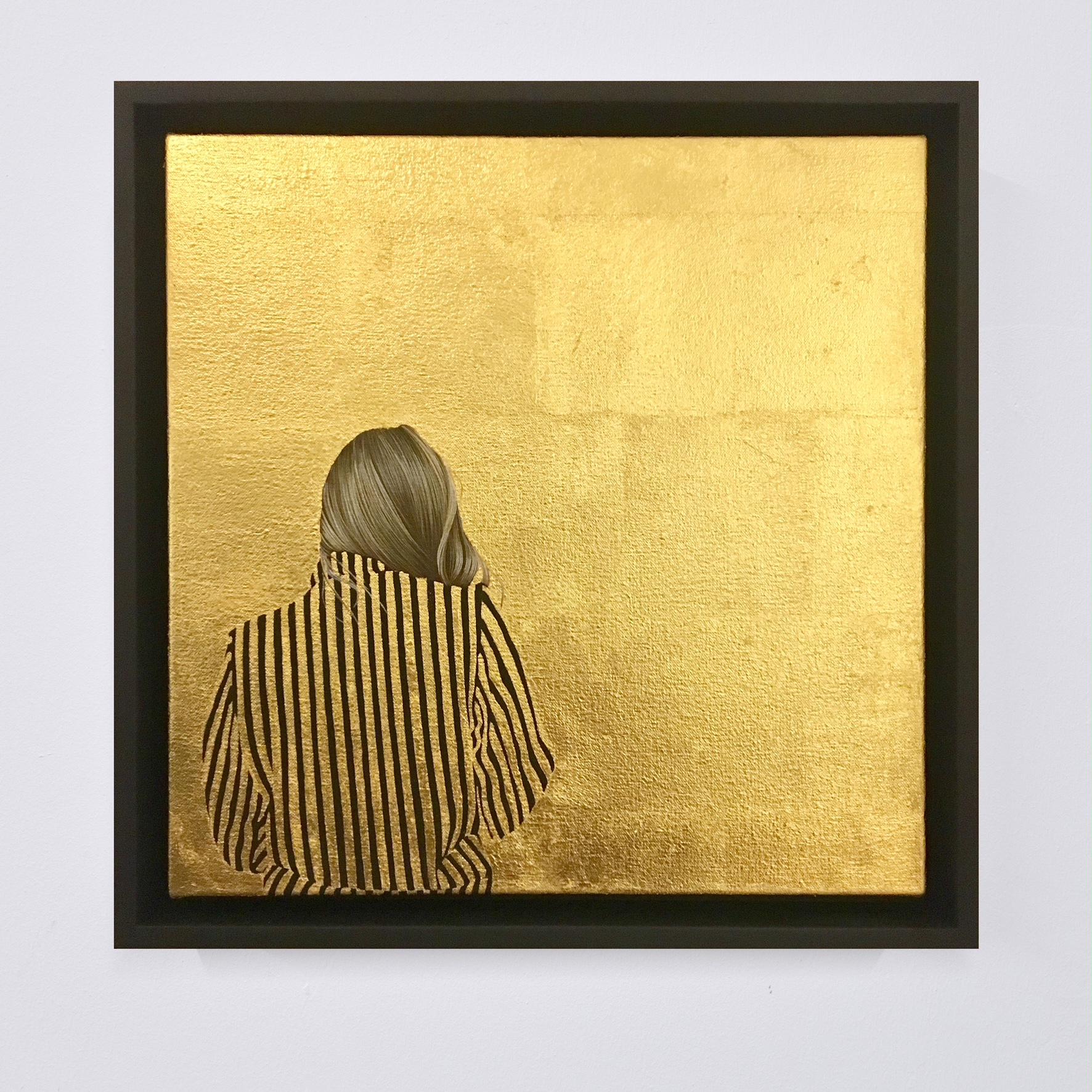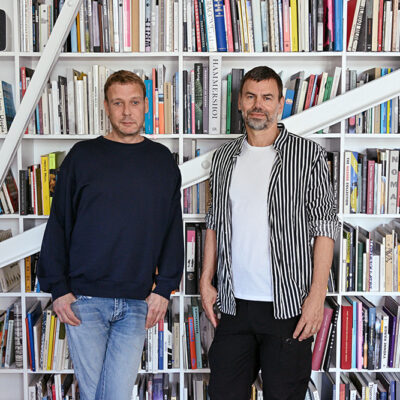Charlotte Hopkins Hall was interviewed by Kristen Knupp of Art Vista Magazine on October 6, 2022, at the vernissage of her exhibition in Geneva.
Kristen Knupp: Could you tell me a little about your background?
Charlotte Hopkins Hall: I was born in Geneva and grew up here. I moved to London when I was 26 years old and have been there ever since. Both my parents are British and worked for the United Nations. I went to the École supérieure des beaux-arts de Genève, before it became HEAD, it was carefree and very cool. I spent five years there between 1999 and 2004. We had top-level tutors and visiting artists.
KK: What is your process for making your art?
CHH: There is a lot of repetition in my work as a social commentary to our society that has become increasingly narcissistic with selfies and the image of the face overtaking our visual lives. So I decided to paint myself but turn my back to the viewer, using it as a motif repeated ad nauseam.
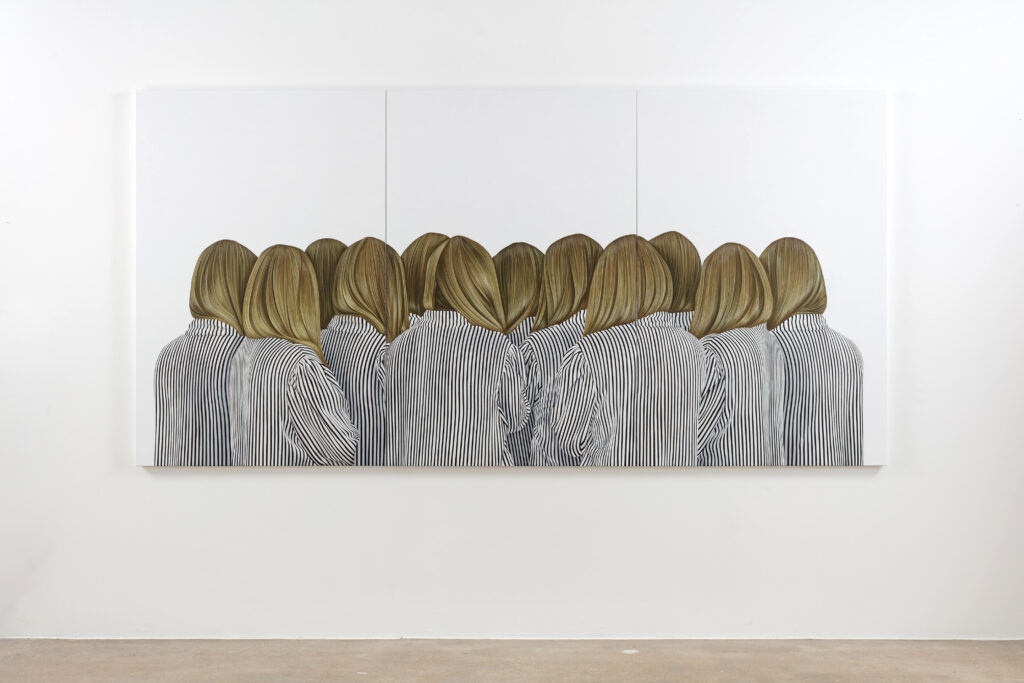
Charlotte Hopkins Hall, Nonsense, Impostors and Rhetorical Bullshit, triptych, 2020. 130 x 300 cm. Acrylic on canvas. Courtesy of the artist.
CHH: This particular painting took 2 and 1/2 months to create. I like to take my time with my paintings because it is a way of slowing time down. We live in a fast age and while some paintings can be produced in one week, and that is fine, I really like to slow things down. So in a good year, I may produce 12 paintings a year due to this slower process.
The fact that there is hair in many of the paintings is a secondary element but it is the one element that attracts the most attention because of how finely it is painted. It really is just because it is my back. There is also an ephemeral aspect to the work similar to the Buddhist Mandala sand paintings that take months and months to create but then are erased with one swipe of their arm. In a similar way, there are so many layers in my work that are lost as I paint over them with layer after layer. Actually, about 60-70% of the work is covered over. I work from dark to light creating depth.
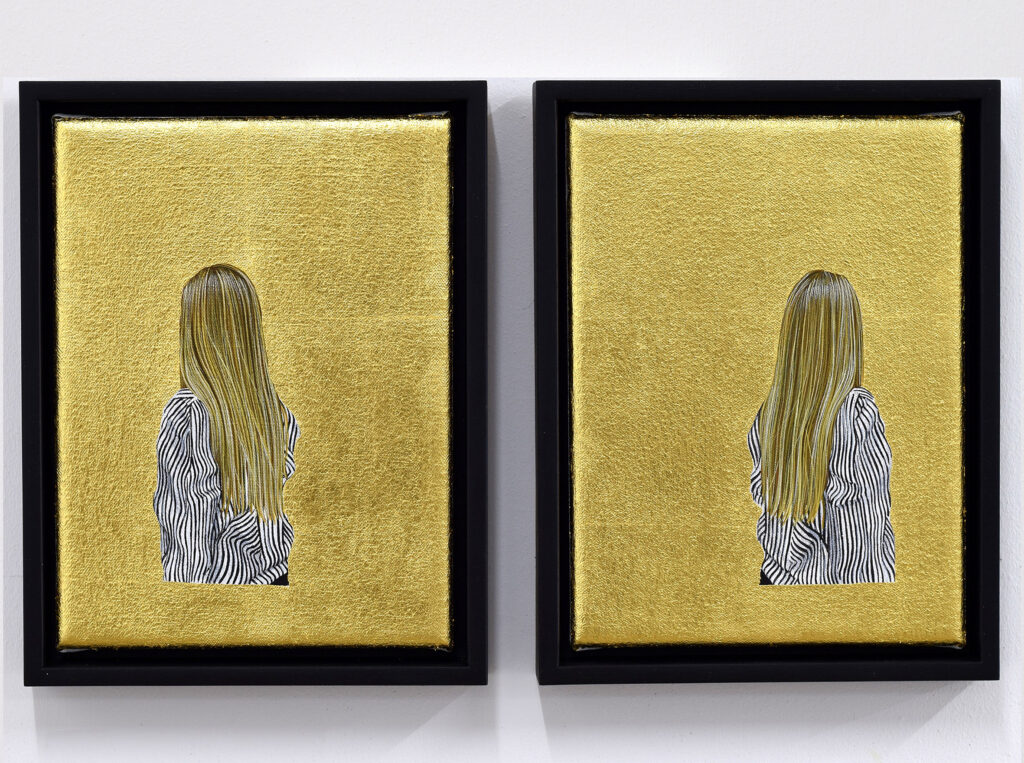
Charlotte Hopkins Hall, Face Off, diptych, 2020. 24 x 35 cm. Acrylic and gold leaf on canvas. Courtesy of the artist.
KK: Is using gold leaf in your work part of your regular practice?
CHH: Yes, it is and I used it in a series called “Paradise Lost” which featured gold leaf and also palm trees. It is a commentary on what is going on around us. The gold leaf is 24-carat gold and there are three layers of it, and it creates little jewel-like works.
KK: Your website refers to people joining groups in order to have an identity as a new phenomenon…what makes you resist this idea?
CHH: It’s about free will and how somehow, through social media, it seems that people are adopting ideas and ideologies in many instances just to fit in without understanding the full implications of them. The difficulty I have with it is that it becomes exclusionary. People adopt ideals that they perhaps don’t fully embrace.
KK: On your website you say want to “question the independence of the individual in the face of collective absurdity” – what do you mean by that?
CHH: I am really interested in the concept of mass movement, and of mass hysteria. For example, groups of people who go completely crazy and decide that someone is outside of the group and need to be silenced. What I find fascinating is that in these groups of hundreds of people no one stands up to question or oppose what is happening, it is such an interesting, whilst terrifying, phenomenon. Politically, the populist movement has been interesting from this point of view.
KK: Your current work is focused on showing figures from the back, with particular attention paid to the individual strands of hair. Do you think hair gives people power, like Samson in mythology?
CHH: This isn’t the first time I have been asked that because it is so relevant to my work. But these are all portraits of me, and I had long hair when I painted them. The point is that the figure is turning its back.
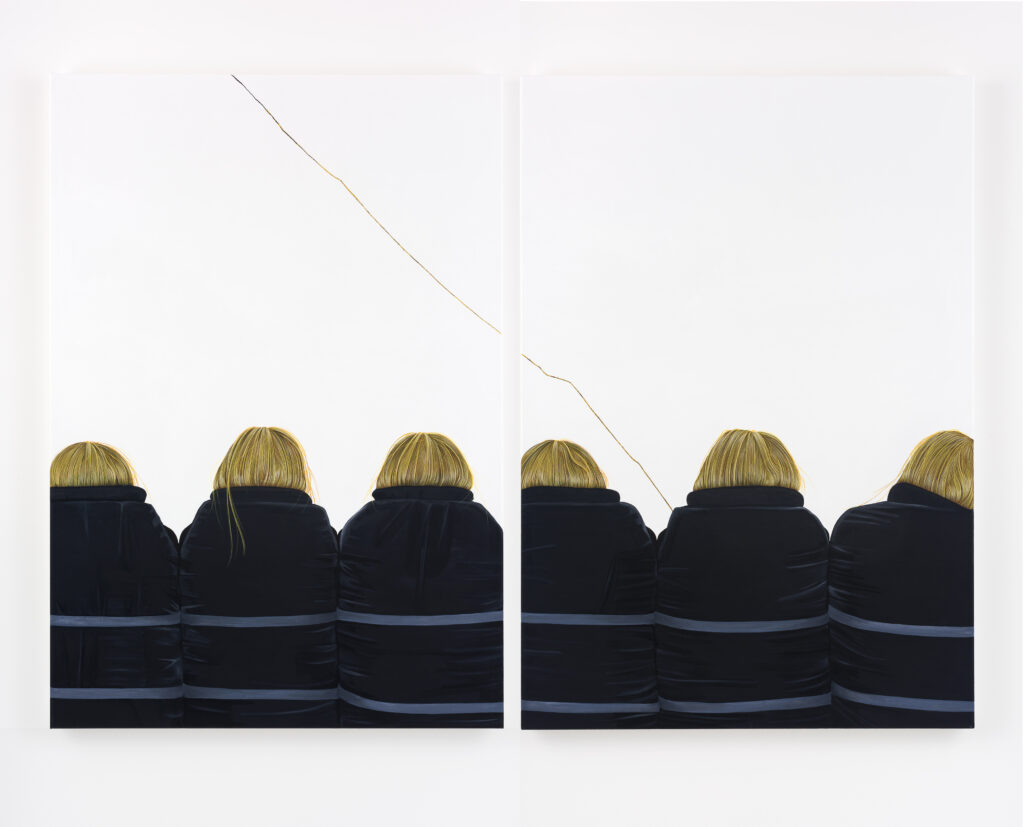
Charlotte Hopkins Hall, If I Could Have Stayed, I Would Have Stayed, diptych, 2021. 130 x 183 cm. Acrylic and gold leaf on canvas. Courtesy of the artist.
CHH: In this painting, in particular, it is a literal interpretation based on the migration crisis in the Mediterranean. They are all wearing life jackets that I have painted in black. My question is: what if the migrants or refugees had blonde hair and were female with white faces? What would the reaction be towards them, would it be different? It is the demonisation of the other that I found horrific and I wanted to show solidarity with these people risking everything to do that crossing, and losing their lives.
KK: Your previous work had portraits of people showing their faces, what made you change to showing them from behind?
CHH: I only painted a small number of people obsessively. I used them as a vehicle for what I wanted to express. Then I started to question whether it was fair to use them as subjects in my painting associated with the topics that I brought in my work so I decided to paint myself, but from the back.
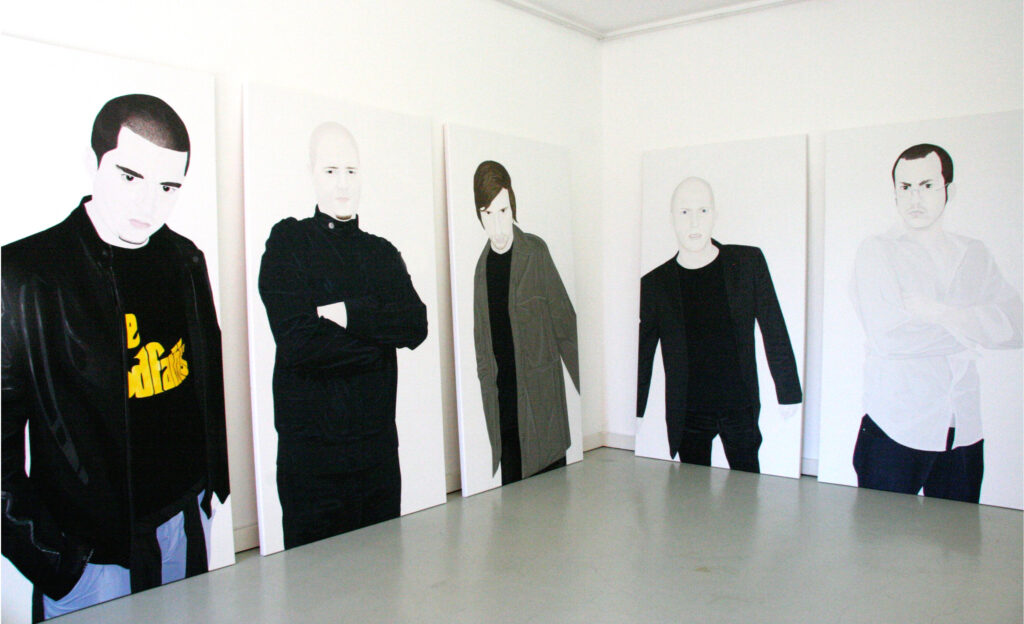
Charlotte Hopkins Hall, Panic Room, polyptych, 2006. 5 x 220 cm x 150 cm. Acrylic on canvas. Courtesy of the artist.
CHH: For example, Panic Room, was from this period, where I painted individual paintings of several different men looking threatening, it was one of my most successful pieces. The paintings were 2 meters 20 high, they towered over people. They were arranged in a small room and some people walked in and straight out again, very uneasy, while others stayed for 1/2 an hour.
KK: Which artists inspire you?
CHH: I have a plethora of artists who inspire me. My kindred spirit is Juan Muñoz, the sculptor. I absolutely love his work. Other influences range from Fra Angelico to the American minimalists via Francis Bacon. I was at the opening of Cornelia Parker’s show at the Tate Britain which was fantastic.
KK: What are your plans for the future?
CHH: I actually sacked my previous galleries and decided to extricate myself from the ultra-moneyed environment of the art world machine. I am focusing on site-specific projects with collaborators and doing them exactly the way I want to. My next project is in London with paintings, sculptures, musicians, a play, so it is an installation. I am also doing a project in Pienza, Italy, in a palazzo. I want to be loud and disruptive and make a lot of noise to try to reclaim art from the market.
For more information go to: www.swissartvalue.ch
Featured image: Charlotte Hopkins Hall, Paradise Lost IX, 2018. 40 x 40 cm. Acrylic and gold leaf on canvas. Courtesy of the artist.
